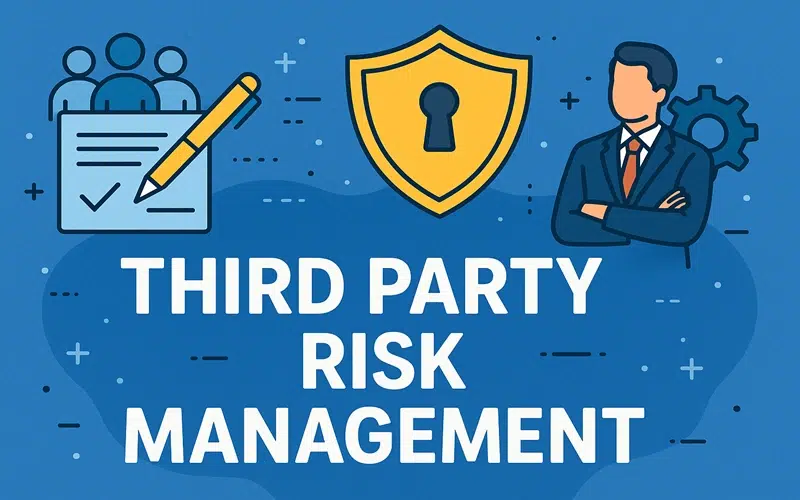In today’s fast-moving world, businesses often work with outside companies to help them grow. These outside companies are called third parties. They might include suppliers, service providers, contractors, or software vendors. While these partnerships bring many benefits, they also come with risks. That’s where third party risk management comes in.
What Is Third Party Risk Management?
Third party risk management (TPRM) is the process of checking, tracking, and managing the risks that come from working with outside companies. When a business shares data, systems, or operations with another company, it may face new dangers. These risks can include:
-
Data breaches
-
Financial losses
-
Legal problems
-
Damage to reputation
-
Operational disruptions
TPRM helps a company make sure that its third-party partners are trustworthy, safe, and follow the rules.
Read Morel: dgmnews.com
Why Is Third Party Risk Management Important?
Imagine you let a friend borrow your phone, and they accidentally delete all your photos. Even though it was an accident, it still hurt you. The same thing happens in business. When a third party makes a mistake or breaks the rules, your company can also get hurt.
Some reasons why TPRM is so important include:
-
Data Protection: Businesses must keep customer data safe. If a third party gets hacked, your data might be stolen.
-
Compliance: There are rules (like GDPR or HIPAA) that companies must follow. If your third party breaks them, your business could face fines.
-
Business Continuity: If a supplier suddenly closes down, your business might stop too.
-
Reputation: One mistake by a third party can make customers lose trust in your brand.
TPRM helps reduce these risks and keeps businesses running smoothly.
Types of Third Party Risks
There are many kinds of risks that can come from third parties. Here are some of the most common:
-
Cybersecurity Risk: A third party might not protect its computer systems well, which could lead to a data breach.
-
Operational Risk: The third party may not deliver goods or services on time, which could disrupt your business.
-
Compliance Risk: The third party might not follow the law, putting your company in danger of legal trouble.
-
Financial Risk: If the third party has money problems or goes bankrupt, they may not be able to deliver what you paid for.
-
Reputational Risk: If a third party is involved in a scandal, it can damage your brand too.
-
Strategic Risk: Working with the wrong partner can take your business in the wrong direction.
TPRM helps companies spot these risks early and deal with them before they become bigger problems.
Steps in Third Party Risk Management
Let’s look at the main steps businesses follow in a good third party risk management program.
1. Identify Third Parties
First, make a list of all the third parties your business works with. This includes suppliers, consultants, contractors, software providers, and even marketing partners.
2. Assess the Risk
Next, figure out how risky each third party is. Ask questions like:
-
Do they handle customer data?
-
Do they have access to our systems?
-
How important are they to our business?
Based on this, you can decide which ones need more attention.
3. Do a Background Check
Before working with a new third party, check their reputation. Look at:
-
Financial history
-
Past legal issues
-
Security practices
-
Customer reviews
You can even send them a security or compliance questionnaire.
4. Create Contracts
Every third party should sign a contract. This contract should clearly say:
-
What the third party will do
-
How they must protect data
-
What happens if something goes wrong
This way, everyone knows their responsibilities.
5. Monitor Continuously
Risk doesn’t stop after you sign a contract. Keep an eye on your third parties by:
-
Reviewing their performance regularly
-
Checking their security practices
-
Watching for news or changes in their business
Regular monitoring helps catch new problems early.
6. Make a Backup Plan
If a third party fails, you need a Plan B. Create backup plans for important services or vendors so your business can keep running.
Tools and Technology for TPRM
Many companies use software tools to help with third party risk management. These tools can:
-
Track third parties in one place
-
Send out risk assessments automatically
-
Provide alerts if a vendor has a problem
-
Help with compliance and audits
Using the right technology makes TPRM easier and more effective.
Challenges in Third Party Risk Management
Even with good planning, TPRM can be tricky. Some common challenges include:
-
Too Many Vendors: Large companies may work with hundreds of third parties. Keeping track of all of them is hard.
-
Changing Risks: New threats (like cyberattacks) are always appearing. Businesses must stay up to date.
-
Limited Resources: Smaller companies may not have enough staff or tools to manage risk properly.
To handle these challenges, companies must stay organized, use the right tools, and keep improving their processes.
Benefits of a Strong TPRM Program
When done well, third party risk management brings many benefits:
-
Fewer surprises and disruptions
-
Better security and data protection
-
Stronger compliance with laws
-
Improved trust with customers
-
Faster and smarter decision-making
It’s like having insurance for your partnerships — it gives you peace of mind.
How to Start With TPRM
If your business doesn’t have a TPRM plan yet, here’s how to begin:
-
Make a list of all your third-party partners.
-
Group them by risk level — high, medium, low.
-
Start with high-risk partners and assess their security and business health.
-
Use contracts to define expectations.
-
Set up a schedule to review and monitor all third parties regularly.
Even small steps can make a big difference over time.
Real-World Example
In 2013, a major U.S. retailer suffered a huge data breach. Hackers got in through a small third-party HVAC (air conditioning) company. The hackers stole information on 40 million credit cards. This caused millions in damage and lost customer trust.
The lesson? Even small vendors can create big problems if not properly managed. That’s why third party risk management is critical for every business.
Final Thoughts
Third party risk management isn’t just for big companies — it’s important for everyone. If you work with other businesses, you need to make sure those relationships are safe and secure. By understanding the risks, checking your partners, and using smart tools, you can protect your business and grow with confidence.
Whether you’re a small startup or a large company, TPRM helps you stay in control while working with others.
FAQs
Q1. What is third party risk management in simple words?
Third party risk management means checking and managing the risks that come from working with other companies. It helps businesses stay safe when they share work, data, or systems with outside partners.
Q2. Why is third party risk management important for businesses?
It protects businesses from problems like data leaks, legal trouble, or service failures caused by third-party companies. It also helps companies stay in line with the law and keep their customers’ trust.
Q3. How can a company start third party risk management?
Start by listing all third parties, assessing the risks they bring, signing clear contracts, and watching their performance regularly. Using software tools can make this process easier.
Read More: money6x.com real estate

